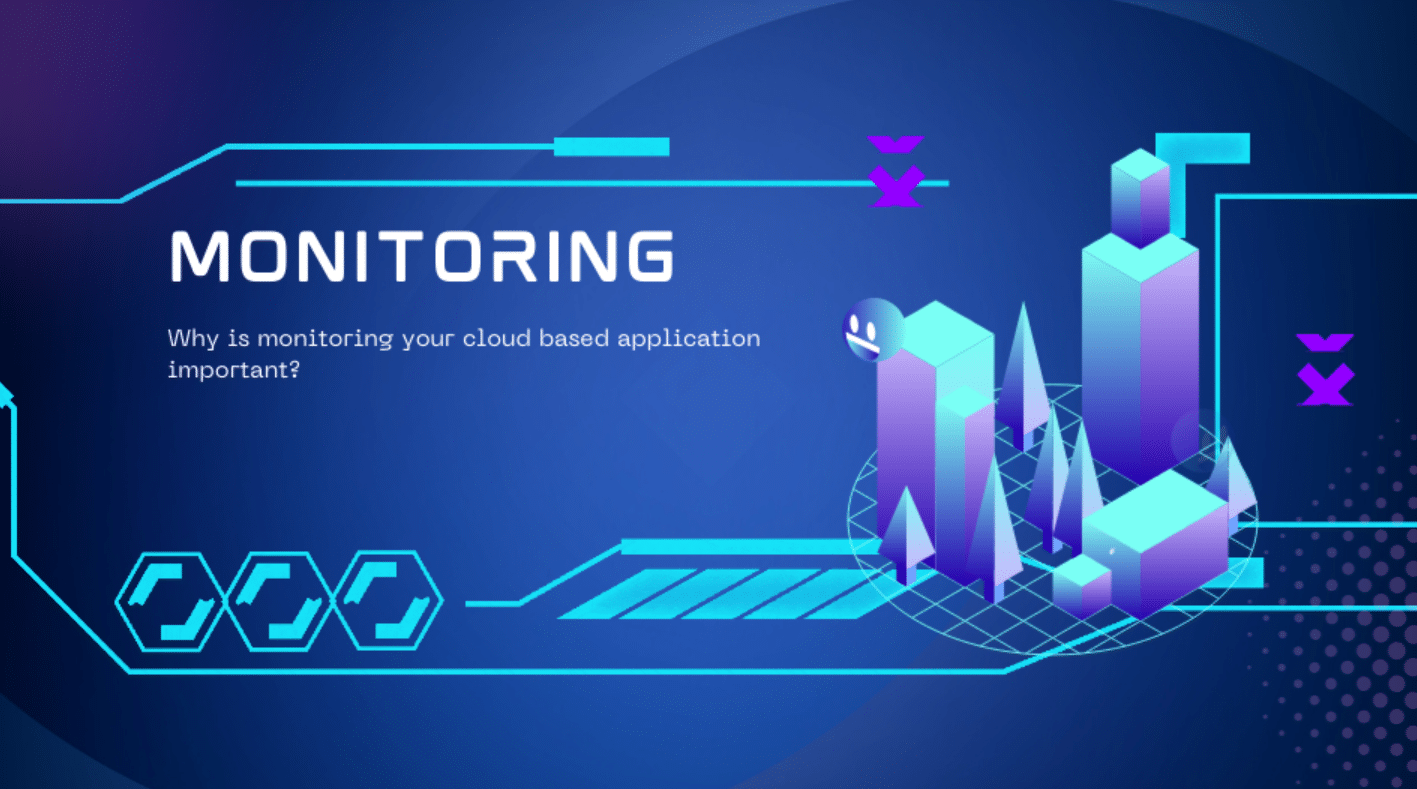Cloud Server Monitoring – In today’s digital-first world, cloud servers are the core of modern IT infrastructure. Businesses rely on them to power websites, run applications, manage data, and support countless backend operations. However, simply deploying cloud servers is not enough. Continuous monitoring is essential to ensure these servers are performing optimally, remain secure, and deliver maximum uptime. This article explores cloud server monitoring in detail—what it is, why it matters, key tools, benefits, best practices, and emerging trends.

What Is Cloud Server Monitoring?
Cloud server monitoring refers to the process of continuously observing the performance, availability, and health of cloud-based virtual servers. This involves tracking metrics such as CPU usage, memory consumption, disk activity, network performance, and system logs. The goal is to detect and resolve issues proactively before they escalate into downtime or service degradation.
Monitoring can also include application-specific metrics, security events, and user behavior analytics. With modern cloud environments often spanning multiple regions, services, and configurations, robust monitoring is the key to maintaining control.
Why Cloud Server Monitoring Is Crucial
Cloud environments offer flexibility and scalability—but they also introduce complexity. Without monitoring, businesses risk:
-
Unexpected downtime
-
Poor application performance
-
Security vulnerabilities
-
Lost revenue and damaged reputation
-
Difficulty diagnosing issues
Here are some core reasons cloud server monitoring is essential:
1. Uptime Assurance
Monitoring helps ensure your cloud servers are available 24/7. Alerts can be configured to notify teams if a server becomes unreachable, allowing for rapid response.
2. Performance Optimization
Performance metrics such as CPU load, memory utilization, and disk I/O give insight into how well your applications are running. Monitoring enables timely adjustments to prevent bottlenecks.
3. Cost Control
Unused or underutilized resources can drive up cloud costs. Monitoring helps identify these inefficiencies, allowing teams to right-size instances or decommission idle servers.
4. Security and Compliance
Monitoring system logs, user access, and configuration changes helps detect potential security breaches. It also supports regulatory compliance through audit trails.
5. Troubleshooting and Root Cause Analysis
When something goes wrong, monitoring data provides the clues. Historical metrics help trace problems to their origin, reducing resolution time.
Key Metrics to Monitor on Cloud Servers
To effectively monitor a cloud server, here are some fundamental categories and metrics:
1. Compute Metrics
-
CPU Usage: Indicates how much processing power is being used.
-
Load Average: Shows the number of active processes.
-
Thread Count: Useful for understanding system concurrency.
2. Memory Metrics
-
RAM Usage: High usage may indicate memory leaks or need for optimization.
-
Swap Usage: Indicates memory pressure—swap usage should ideally be minimal.
3. Disk Metrics
-
Disk Usage: Helps avoid storage shortages.
-
Disk IOPS (Input/Output Operations Per Second): Measures read/write activity.
-
Disk Latency: Slow disks can bottleneck performance.
4. Network Metrics
-
Bandwidth Usage: Helps understand data flow and detect anomalies.
-
Packet Loss and Latency: Indicates network quality issues.
-
Connections and Ports: Helps monitor open connections and detect unauthorized access.
5. Application-Level Metrics
-
HTTP Response Time
-
Error Rates
-
Request Throughput
-
Database Query Performance
6. Security Metrics
-
Failed Login Attempts
-
Firewall Status
-
Intrusion Detection Events
-
Configuration Changes
Cloud Monitoring vs. Traditional Server Monitoring
While the core principles are similar, cloud monitoring differs from traditional server monitoring in several key ways:
| Aspect | Traditional Servers | Cloud Servers |
|---|---|---|
| Environment | Static, hardware-based | Dynamic, virtualized |
| Scalability | Limited | Highly scalable |
| Monitoring Tools | On-premises agents | Cloud-native or API-based |
| Cost Monitoring | Fixed infrastructure | Variable costs based on usage |
| Resource Flexibility | Manual provisioning | Auto-scaling and orchestration |
Popular Cloud Server Monitoring Tools
There are many tools available for monitoring cloud servers, ranging from native tools provided by cloud platforms to third-party solutions. Here’s a breakdown:
1. Native Cloud Monitoring Tools
-
AWS CloudWatch: Monitors AWS resources and applications in real-time. Supports custom metrics, logs, and alarms.
-
Azure Monitor: Provides metrics, logs, and diagnostics for Azure-based workloads.
-
Google Cloud Operations (formerly Stackdriver): Offers observability across Google Cloud services and hybrid environments.
2. Third-Party Monitoring Solutions
-
Datadog: Cloud-native monitoring platform that integrates with over 400 services.
-
Prometheus + Grafana: Open-source monitoring and visualization tools often used with Kubernetes.
-
New Relic: Provides performance monitoring and APM (Application Performance Monitoring).
-
Nagios: Popular for traditional and cloud environments, known for its robust alerting system.
-
Zabbix: Open-source tool that supports a wide range of cloud and network devices.
3. Security and Compliance Tools
-
OSSEC: Host-based intrusion detection system.
-
Wazuh: Security monitoring and threat detection for cloud servers.
-
CloudTrail (AWS): Tracks API calls for audit and security analysis.
Best Practices for Cloud Server Monitoring
To gain maximum value from your monitoring efforts, consider these best practices:
1. Define Clear Monitoring Objectives
Start by identifying what you want to monitor and why. Align your monitoring with business goals—e.g., ensuring fast page loads, maintaining 99.99% uptime, or staying within budget.
2. Set Thresholds and Alerts
Establish thresholds for key metrics. For instance, alert when CPU usage exceeds 80% for more than 5 minutes, or when disk usage reaches 90%.
3. Automate Incident Response
Use automated scripts or integrations (e.g., with Slack, PagerDuty, or Microsoft Teams) to notify your team and initiate actions when an issue is detected.
4. Monitor in Real-Time and Use Historical Data
Real-time monitoring helps with immediate detection, while historical data supports trend analysis, forecasting, and post-mortems.
5. Use Dashboards and Visualization
Visual tools like Grafana, Kibana, or built-in dashboards from providers help interpret complex data and identify anomalies quickly.
6. Integrate with DevOps and CI/CD
Incorporate monitoring into your development and deployment pipelines. For example, use health checks during deployments and rollbacks if performance degrades.
7. Regularly Audit and Review Monitoring Setup
Periodically review your metrics, thresholds, and alert policies to adapt to new infrastructure changes or business needs.
Challenges in Cloud Server Monitoring
Despite its benefits, cloud monitoring comes with its own set of challenges:
1. Data Overload
With dozens or hundreds of metrics being tracked, it’s easy to become overwhelmed. Prioritize what’s essential.
2. Distributed Systems
In microservices and containerized architectures, tracing performance across multiple services can be complex.
3. False Positives/Negatives
Poorly configured alerts can cause alert fatigue or missed incidents.
4. Security and Privacy
Monitoring tools must be secured properly to prevent exposing sensitive data.
5. Cost of Monitoring
Monitoring itself can incur costs—especially when storing logs, collecting high-resolution metrics, or using premium tools.
Trends in Cloud Server Monitoring
As cloud computing evolves, so does the practice of monitoring. Here are some emerging trends:
1. AI and Machine Learning
AI is increasingly used for anomaly detection, predictive maintenance, and automated remediation. Tools like Datadog and New Relic now offer AI-based insights.
2. Observability Over Monitoring
While monitoring asks what happened, observability answers why it happened. Observability combines metrics, logs, and traces to provide a holistic view.
3. Kubernetes and Container Monitoring
With the rise of containerized environments, monitoring tools now offer native support for Kubernetes, tracking pod performance, node health, and service meshes.
4. Serverless Monitoring
As more businesses adopt serverless architectures (e.g., AWS Lambda), monitoring shifts from server metrics to function-level insights like execution time and error rates.
5. Unified Monitoring Platforms
Organizations increasingly seek single-pane-of-glass platforms that monitor infrastructure, applications, security, and user experience together.
Conclusion
Cloud server monitoring is not a luxury—it’s a necessity in today’s high-availability, always-connected environment. With the right strategy and tools, organizations can maintain performance, ensure security, manage costs, and deliver superior digital experiences.
Whether you’re a startup running a single cloud instance or a large enterprise with a complex multi-cloud setup, investing in comprehensive monitoring is the foundation of operational excellence. As infrastructure becomes more dynamic and distributed, monitoring must evolve from reactive to proactive—and ultimately, predictive.
